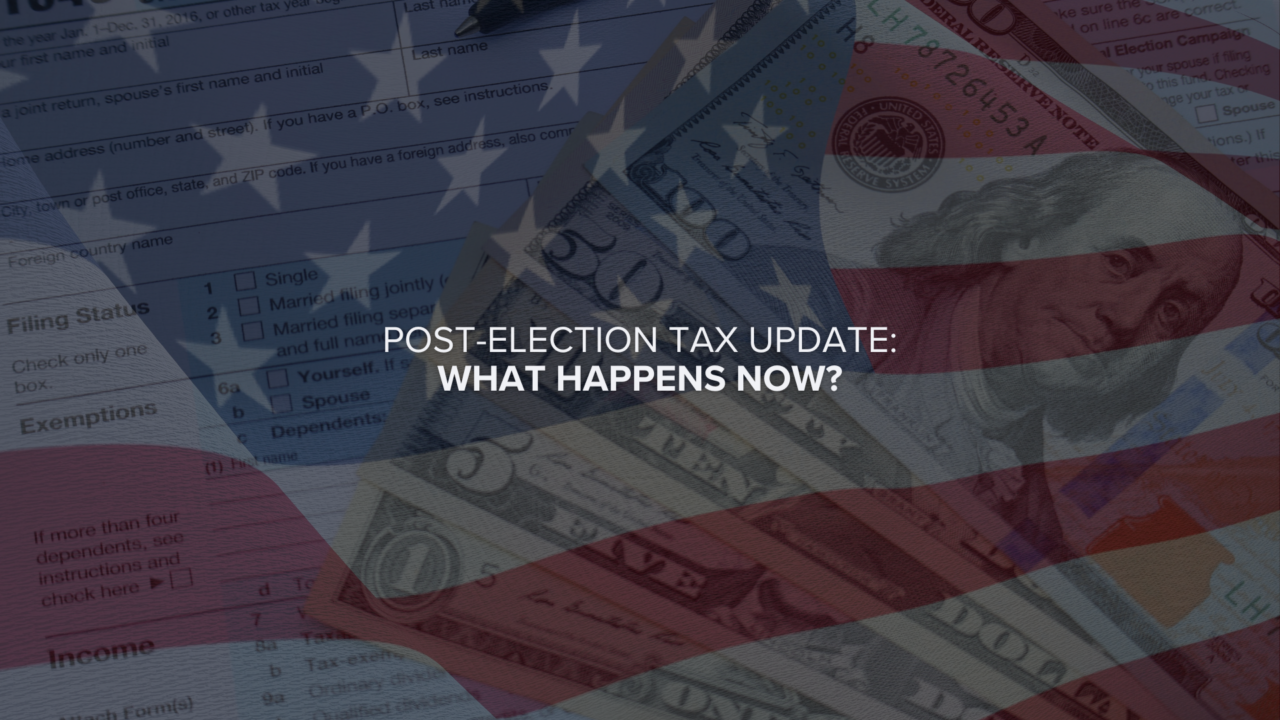The $1.5 trillion tax reform legislation known as the “Tax Cuts and Jobs Act” (TCJA) represents the biggest change to the tax code since 1986. While the implications for businesses are broad and complex, we’ve summarized some of the most common tax reform questions for manufacturers:
What are the top issues manufacturing companies need to know about tax reform?
The new tax law includes several provisions that have significant implications for manufacturers. Tax reform may prompt changes including:
- Changes to entity structure: Should a manufacturer operate as a C corporation, sole proprietorship, S corporation, or partnership? The answer isn’t always clear. Companies may want to consider revisiting their entity structure post-tax reform to ensure they are maximizing the benefits from the lower corporate tax rate and Section 199A deduction.
- Expansion plans abroad: Manufacturers must keep in mind the TCJA’s many international tax provisions—i.e. Global Intangible Low-Taxed Income (GILTI), Foreign Derived Intangible Income (FDII), Base Erosion Anti-Abuse Tax (BEAT), and the one-time transition tax on foreign assets—that could affect their overseas operations and expansion plans. Thinly capitalized companies should also consider the impact of the accelerated depreciation opportunities and interest limitation rules under Section 163(j).
- Capital expenditure spending: Changes to bonus depreciation will impact manufacturers’ capital expenditure spending, including the purchases of equipment, property, plant expansions and other assets.
- Research and development (R&D) activities: Changes to the research tax credit will affect companies’ R&D activities. See Question 6 for more detail.
In addition to the above, manufacturers should stay abreast of any changes to state and local taxes (SALT) resulting from legislative changes at the federal level.
What are the longer-term effects of tax reform for the manufacturing industry?
While there are exceptions, many manufacturers anticipate tax reform will have a positive long-term effect on the industry. Lower tax rates, along with changes to bonus depreciation, will provide many companies the capital they need to invest in improvements, hiring and retention, expansion, acquisitions, and more. Meanwhile, the new territorial tax system highlighting a participation exemption regime, paired with the rate deduction, will likely make the United States a more attractive base for manufacturers and encourage some to repatriate their foreign assets. And while it’s impossible to fully predict the new law’s long-term effects, there’s no doubt that the tax code changes will significantly impact manufacturers’ supply chains, location of intangibles, related income, site selection, and a plethora of other factors.
How will the corporate tax rate reduction impact U.S. manufacturers’ choice of entity?
While the individual and pass-through (e.g., partnerships and S corporation) provisions are generally phased out in less than a decade, the tax cuts for C corporations are permanent changes to the Internal Revenue Code—with the corporate tax rate reduction from 35 to 21 percent seen as a win for manufacturers. The law also contains a deduction of up to 20 percent of qualified business income (QBI) of pass-through entities, which will provide substantial benefits for taxpayers operating certain trades and businesses, including manufacturing. These and other factors, described in part below, could make choice of entity determinations one of the most important tax decisions taxpayers will ever make.
The entity selection flexibility provided in the “check-the-box” regulations has largely separated taxes from other business factors in making entity determinations. Further, the law has largely eliminated disparities in net federal income tax rates. Lowering tax rate disparities between entity types puts pressure on every significant tax aspect, which could control the ultimate decision.
Some of the factors that can impact the projected long-term net effective tax rate (ETR) include:
- Length of the investment period and ultimate exit
- Special allocations of income/loss amongst partners
- Method of capitalization (i.e., debt vs. equity)
- State and local tax
- International tax
- Deductions and losses (e.g., bonus depreciation and expensing, general timing)
- Character (e.g., capital gain, ordinary losses, or both under section 1231)
- Accounting methods
- Investor restrictions (e.g., publicly-traded or foreign owned)
- Compliance costs/tax complexity
It’s possible that a C corporation conversion may yield a lower overall after-tax cash benefit to the owners. However, there are several significant considerations that will impact the choice of entity decision, and companies must do what makes the most sense for them.
Do I have to pay the transition tax?
Generally, an entity is subject to the one-time transition tax under the TCJA if it owns 10 percent or more of a controlled foreign corporation (CFC) with post-1986 accumulated foreign earnings. The transition tax rate is 15.5 percent on cash assets and eight percent on non-cash assets held offshore, regardless of whether the amounts are distributed.
The transition tax can be paid in one or eight installments, spread over eight years upon election. If a taxpayer chooses to pay the tax in eight installments, 8 percent of the net liability is due in each of the first five installments, 15 percent in the sixth installment, 20 percent in the seventh, and 25 percent in the final. C corporations can potentially take foreign tax credits (FTCs) to offset the transition tax. S corporation shareholders may elect to defer payment transition payment indefinitely until it is sold, liquidated, or otherwise disposed.
For many manufacturers, this is a one-time opportunity to repatriate cash at a low tax rate. And while the original tax filing deadline of April 17 has already passed, manufacturers who’ve requested an extension and wish to pay the transition tax in installments must elect to do so in their 2017 federal income tax return. They must also pay the first installment (8 percent) with their 2017 income tax return or lose the right to defer payments.
What are the implications of the changes to bonus depreciation?
The changes to bonus depreciation are a huge win for the manufacturing industry. Under the prior tax law, bonus depreciation only applied to new equipment purchases. However, the new law allows manufacturers to expense 100 percent of the full cost of qualifying property—both new and used equipment—placed into service after Sept. 27, 2017 and before Jan. 1, 2023. The definition of “qualifying property” was also expanded to include certain depreciable tangible property used in connection with lodging, as well as improvements to non-residential real property such as roofs, heating, ventilation and air conditioning systems, and fire and alarm protection systems.
In addition, the new law increases the Section 179 expensing limit—i.e. the amount a manufacturer can claim on qualifying property—from $520,000 to $1 million and the phaseout threshold from $2.07 million to $2.5 million, both of which are indexed for inflation. Normal depreciation rules apply when a company hits $3.5 million in Section 179 expenses. The amount of qualified property a manufacturer can expense will decrease 20 percent per year after Jan. 1, 2023 and expire completely after 2026.
Changes to bonus depreciation are expected to boost manufacturers’ capital spending, as well as provide new business opportunities to equipment makers. Manufacturers should take advantage of these changes to reduce their taxable income and the amount of tax paid.
How was the Research Tax Credit impacted by tax reform?
Under tax reform, the Research Tax Credit’s net value was effectively increased by 22 percent—from 65 percent to 79 percent of incremental qualified spending—because of the corporate rate’s reduction and the required Section 280C(c)(3) election or addback of Research and Experimental (R&E) deduction.
The new provision under tax reform, Section 280C(c), was enacted to prevent taxpayers from getting a double benefit for their research-related expenses—i.e., a deduction and a credit for the same expenses. Section 280C(c) thus requires taxpayers to (1) reduce their deduction for IRC Section 174 allowable expenses by the amount of the research credit, or (2) elect a reduced credit generally equal to the research credit minus the product of the research credit and the maximum corporate tax rate.
Manufacturers generally view this provision positively when coupled with the repeal of the corporate Alternative Minimum Tax (AMT). Now, taxpayers who would have been subject to the AMT and who therefore generally wouldn’t have been able to use research credits to offset their federal income tax liability can do so. Net Operating Losses (NOLs) taxpayers may also find the research credit a helpful way to offset the taxes they’ll now have to pay given the modification of the NOL deduction.
Taxpayers seeking to maximize the benefit of immediately deducting R&E expenditures should consider the effective date of the required amortization rule (i.e., Dec. 31, 2021) and if possible, accelerate their R&D activities prior to this date.
What are the accounting implications of tax reform?
Many tax reform provisions provide accounting method planning opportunities that can result in permanent tax savings for taxpayers. See BDO’s Summary of Key Tax Reform Implications on Accounting Methods alert for an overall analysis.
As many of these planning ideas can only be implemented in a limited time frame, taxpayers and tax professionals are encouraged to begin gathering information and evaluating action items as soon as possible to properly comply with the procedural rules for making accounting method changes.
When will we know more detailed rules regarding international tax reform?
The legislation was enacted on Dec. 22, 2017, but we are awaiting further clarification from the IRS on additional details in all areas of the new provisions. The IRS has issued several documents—including a Revenue Procedure and three Notices—attempting to provide clarification and guidance.
For more, read one of our ITS articles explaining additional Treasury guidance under 965, changes in section 965 specified foreign corporations’ tax years, and an IRS section 965 Q&A.




